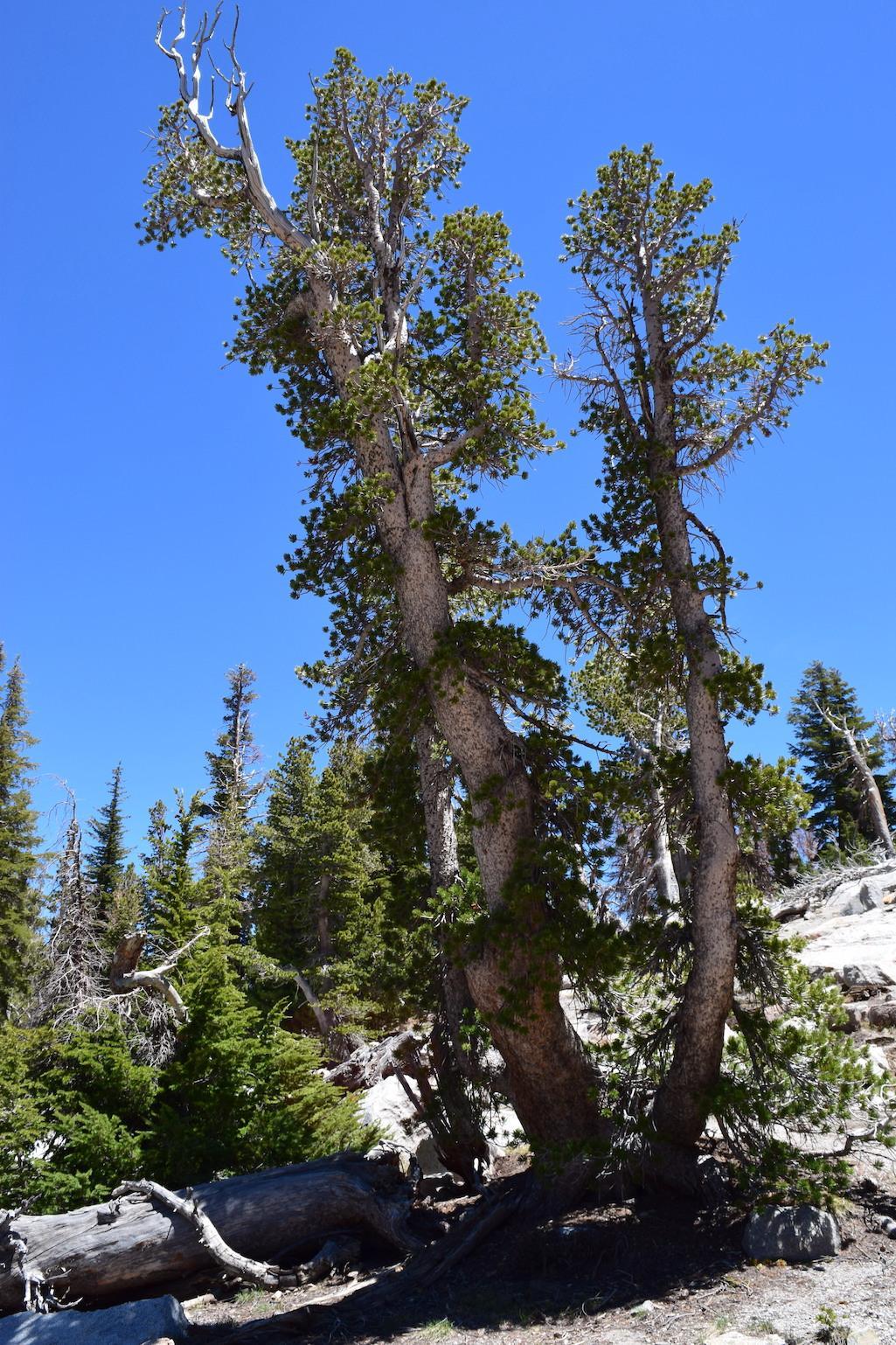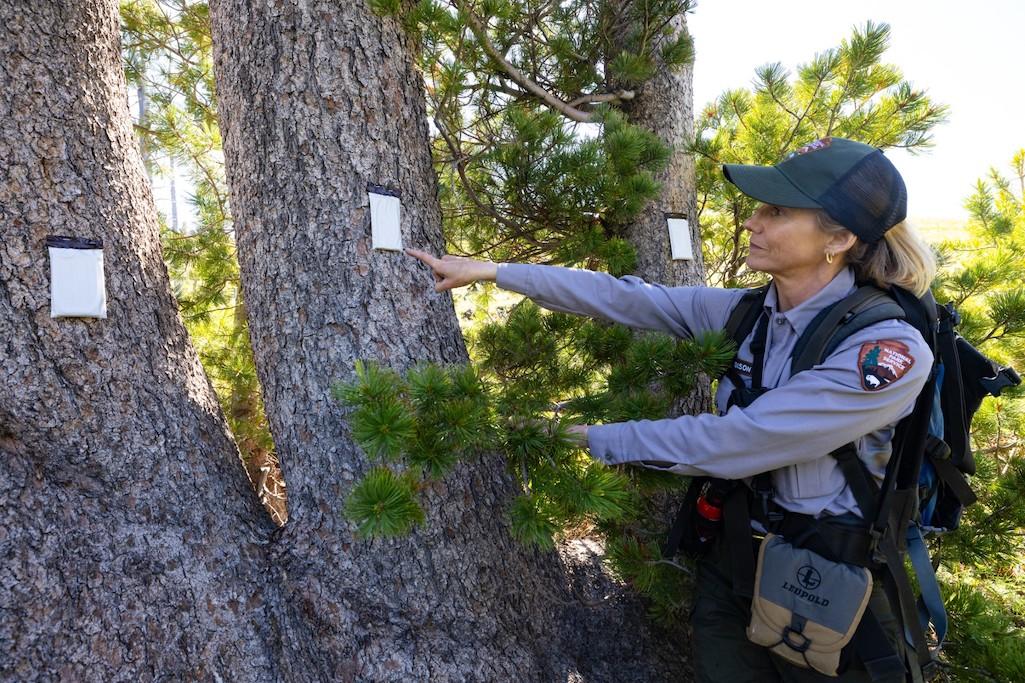
A five-year effort is being launched to restore whitebark pine stands in national parks in the West/Diana Tomback
The federal government is going to try to return whitebark pine, a threatened species, to parts of Glacier, Grand Teton, and Yellowstone national parks under a program with American Forests that is being funded with $44 million from the Inflation Reduction Act.
The five-year collaboration between American Forests and the National Park Service is seen as the largest climate and conservation investment in history, according to the Park Service.
Roughly 70 percent of the species' range lies within the United States, according to U.S. Fish and Wildlife Service staff, with the remaining 30 percent in Canada, where the trees can be found in all of that country's mountain national parks — Waterton Lakes, Banff, Kootenay, Yoho, Mount Revelstoke, Glacier, and Jasper.
Whitebark pine health is designated by the National Park Service as a "vital sign" of the subalpine ecosystems where it grows because it is a keystone species. This means that it is critical to the ecosystems' ecological function, supporting many other plants and animals that live there and influencing ecological processes like snow retention and spring run-off.
Declines in whitebark pine populations have been attributed to an interacting set of factors including blister rust disease, mountain pine beetle infestations, and climate change.
While mountain pine beetle infestations are not uncommon in Western forests, global warming has allowed them to reach high-elevation whitebark pine forests where the trees have not evolved defenses against the beetles. Prior to climate change, harsh winters kept mountain pine beetles (which are the size of a grain of rice) at bay. Warmer temperatures have dramatically increased the beetles’ numbers, allowing them to move upwards to attack the whitebark pine.
And whitebark pines are slow to reproduce; they can take 75 years of growth before they sprout their first pine cone.
Blister rust is an invasive disease thought to have arrived in North America around 1900 from France with imported eastern white pine seedlings. The fungus kills by girdling branches on infected trees.

A National Park Service employee points to whitebark pine verbenone packets, which help ward off mountain pine beetles. Whitebark pine restoration will be supported with funding from the Inflation Reduction Act. Yellowstone National Park/NPS, Jacob W. Frank
Through the Investing in America agenda, the Department of the Interior is implementing more than $2 billion in investments to restore the nation’s lands and waters and advance the America the Beautiful initiative to restore and conserve 30 percent of lands and waters by 2030. To guide these historic investments, the department released a restoration and resilience framework to support coordination across agency restoration and resiliency programs and drive transformational outcomes. This includes a commitment to the National Seed Strategy, which aims to foster interagency and public-private collaboration to increase the supply of native seeds available for timely and effective restoration.
Listed as threatened under the Endangered Species Act in December 2022, whitebark pine is a keystone species that is vital to many high-elevation ecosystems in North America. Its seeds are a high-calorie food source for more than 19 animal species, including Clark’s nutcrackers and grizzly bears. Additionally, whitebark pine forests are vital to the health of streams and rivers as they act as living snow fences that help regulate the flow of snowmelt that supplies downstream watersheds.
“The National Seed Strategy spotlights how successful native plant restoration starts with having access to the rights seeds,” said NPS Director Chuck Sams. “Our agreement with American Forests will enable the collection of seeds from drought and disease resistant whitebark pines and ultimately help us to restore these trees in national parks.”
Whitebark pine numbers have been rapidly declining due to disease, pests, and climate change. It is estimated that more than 325 million whitebark pine have been lost across their range. White pine blister rust, an invasive fungal disease that forms deadly cankers, is among the greatest threats to the high-elevation conifer.
American Forests is working with the Park Service to identify and implement projects guided by the National Whitebark Pine Restoration Plan — a science-informed strategy that identifies core restoration areas and actions needed to conserve whitebark pine. The plan, which is scheduled to be released this fall, was developed in partnership by American Forests with the Whitebark Pine Ecosystem Foundation, the U.S Department of Agriculture’s Forest Service, Interior Department bureaus including the Bureau of Land Management and National Park Service, and numerous tribal land managers.
“This agreement is a pivotal step toward preserving the biodiversity and health of whitebark pine and its vital ecosystems,” said Brian Kittler, forest restoration lead with American Forests. “National parks are not just places to be enjoyed for their beauty and history, they also harbor vital habitat for the whitebark pine and other species in decline. Together, American Forests and the National Park Service are advancing the state of the science for conserving this life-giving tree.”
In Yellowstone, Glacier and Grand Teton national parks, American Forests is collaborating with land managers to pioneer direct seeding trials. The method, which involves planting seeds directly into the ground, as opposed to planting seedlings grown in greenhouses, may offer a low-impact and cost-effective alternative to restore whitebark pine in remote locations.
American Forests is also partnering with Yosemite, Kings Canyon and Sequoia national parks to identify and harvest cones from drought and disease-resistant whitebark pine trees. Seeds from resistant parent trees will be screened and cultivated to grow the next generation of climate-resilient forests in California.
The agreement will support future projects to come, as American Forests and national parks throughout the western United States continue to identify restoration opportunities.
To learn more about national efforts to protect and restore whitebark pine, visit SavetheWhitebarkPine.org.
Previous Traveler stories about whitebark pines:
Whitebark Pine Listed As A Threatened Species Under ESA
Declines In Whitebark Pine Could Prompt Declines Of Clark's Nutcracker In Parks
Is Climate Change Driving A New Forest Regimen in the Greater Yellowstone Ecosystem?
Plan Crafted To Address Threats To Whitebark Pine Forests in Greater Yellowstone Ecosystem
Whitebark Pine Trees In Crater Lake National Park Under Attack From Blister Rust, Pine Beetles
Parks Canada Striving To Help Whitebark Pines Avoid Extinction
Research Shows Steady Decline In Snowfall At Yellowstone National Park
Report Lists 10 U.S. Ecosystems Whose Species Are Most-Threatened By Climate Change




 Support Essential Coverage of Essential Places
Support Essential Coverage of Essential Places






